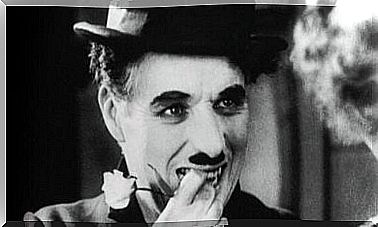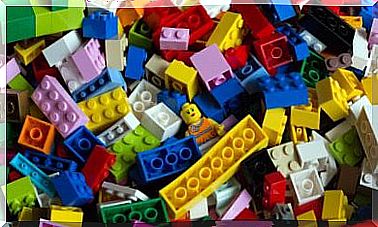What Is Positive Reinforcement And How Can You Use It?

What can we do to get a person to repeat certain behavior patterns? How can we increase their frequency? Everything is connected with positive reinforcement, a procedure that is used especially in pedagogy and behavioral therapy to encourage certain desirable behaviors or attitudes.
But what else do we know about positive reinforcement ? How to use it? What types of reinforcements are there? How do they differ from punishment? If you want to know the answers to these and other questions and also discover reinforcements that you can apply in your daily life, then read on!
What is positive reinforcement and how can it be used?
Positive reinforcement is a resource that is used extensively in behavioral therapy and pedagogy. This type of amplification includes all such elements that can increase the probability that a certain response takes place.
Here we are talking about such things that help us to consolidate certain behavioral patterns and make them occur more often. Naturally, these are usually appropriate and positive behaviors and attitudes, such as sitting properly at the dining table.
A key figure in this field is the American psychologist BF Skinner, who is known for his behavioral theory. He suggested that positive reinforcement is useful for reinforcing certain behavioral patterns. According to him, positive reinforcement was all that helps us to repeat desirable behaviors.
Skinner distinguished himself by systematically describing what characterized this kind of learning process. In addition, he applied it in many different areas and above all in pedagogy.
Furthermore, positive amplification is a technique that forms part of operant conditioning. This is a learning system based on the use of reinforcement and punishment to increase or decrease the likelihood of certain behaviors occurring.
This type of process causes people to make a connection between their behaviors and the consequences of these.

Examples of positive reinforcement
So what do you really mean by positive reinforcement? Almost anything, actually. It can consist of praise (verbal reinforcement), objects, gestures, gifts, prizes, words, food, etc.
Positive reinforcements can be classified into different groups, depending on their nature and properties. In this article, you will learn what different types of positive reinforcements are available.
How to use positive reinforcement
There are various factors that contribute to making positive reinforcements more effective. The effectiveness is based on knowing which procedure and which type of reinforcement you should use:
- Immediate. Ideally, you should apply positive reinforcement immediately after the onset of the desired behavior (ie, the behavior you want to increase).
- Following. The positive reinforcement should take place immediately after the desired behavior, not before or in parallel with it.
- Conditioned. We should always use positive reinforcement when we observe the behavior we desire.
- Periodic. The time period of the procedure should be extended to consolidate the desired behavior.
- Choice of reinforcement. We need to choose new and varied reinforcements to keep the motivation of the person concerned up.
When using positive reinforcement, we must also consider the following aspects in order for it to be effective:
- We must carefully specify the behavior we want to encourage.
- We need to control various factors (or other reinforcements) that can compete with our positive reinforcements.
- Finally, we must try to prevent the person in question from losing interest in the reinforcements. In that sense, we need to make sure that the reinforcement does not take too long and we should have an idea of how long it will last.
Reinforcement and punishment
To better understand what positive reinforcement means , we should define the opposition that exists between reinforcement and punishment.
As we have already mentioned, amplification is all such stimuli that increase the probability that a certain response will occur. The gain can be positive (when the presence of an element causes the behavior to occur more often) or negative (when the removal of an element also causes the behavior to occur more often).
An example of positive reinforcement could be praising a child every time he or she eats his or her breakfast. In contrast, an example of negative reinforcement could be when you free the child from tedious chores every time he or she does his or her homework.
Both forms of reinforcement (both praise and relief from boring deeds) will increase the likelihood that the desired behavior will occur, provided that it is repeated for some time shortly after the person concerned exhibits the behavior they want to try to encourage. (In this case, it means that the child would eat his breakfast or do all his homework).
Punishment, on the other hand, is the opposite of reinforcement. It usually reduces the likelihood that the person in question will change the behavior they want to end.
On the one hand, there is talk of positive punishment. An example of this is telling a child to stand with their face against the wall and to speak seriously or scold him or her. On the other hand, there is negative punishment, which means that you deprive the child of something he likes. A couple of examples are not letting the child watch TV or forbidding him or her from going out during the weekend.
Differences between procedures
In other words, the main difference between the “positive or negative” in both procedures is the behavior (positive) or the removal / disappearance (negative) of some element of the behavior. The reinforcement process is mainly characterized by the effort to promote a desired behavior. With punishment, you instead try to stop the unwanted behavior.
Different types of positive reinforcement
There are up to sixteen different forms of positive reinforcement, which according to Vallejo’s handbook in behavioral therapy (2012) can be divided into six different categories:
1. Based on origin
Positive reinforcement can be classified based on origin (the value you want to reinforce) as:
- Primary. It has an inherent value. For example, food.
- Secondary. This reinforcement takes place through learning and is more specific.
- Generalized. These are amplifiers that refer to different responses. An example is symbolic money (token economy).
2. Based on the reinforcement process
Based on this criterion, positive reinforcement can be of two types:
- Outer. The procedure is open and observable (eg a compliment).
- Internal. The process is invisible (such as a thought).
3. Based on the person exercising the reinforcement
Depending on who is performing the reinforcement, this can take two different forms:
- External. Someone is using the reinforcement on the person in question.
- Self-reinforcement. The person uses the reinforcement inwards on himself.
4. From the recipient
Depending on which person receives the reinforcement, two forms can be distinguished:
- Immediately. The person is himself the subject of reinforcement.
- Indirectly. The person observes how someone else is subject to the reinforcement.
5. Based on the nature of the reinforcement
Depending on the nature of the reinforcement, this can be divided into the following groups:
- Material or concrete. It has a physical component (such as a bicycle).
- Edible or manageable. Which can be eaten or handled (such as jelly candy).
- Social. Which is interpersonal in nature, such as verbal and non-verbal language (eg a hug).
- Active. A pleasant experience for the person concerned (a cinema visit, for example).
- Premacks principle. Then a rare behavior becomes more likely if it is linked to a common behavior.

6. Based on programming
Finally, based on their programming, we find the following types of amplification:
- Natural. There is a high probability that it will occur in the specific environment.
- Artificial. It is used under certain conditions.
Upbringing with the help of positive reinforcement
It is obvious that positive reinforcement can give very positive pedagogical results. In addition, it forms part of broader behavior-related programs and treatments, such as applied behavior analysis ( AB pplied Behavioral Analysis or ABA therapy). This has been designed by the clinical psychologist Ole Ivar Lovaas and is especially suitable for children with autism.
As we pointed out above, positive reinforcement is included as part of more comprehensive behavioral techniques or behavioral programs, including differential reinforcement of incompatible behavior, differential reinforcement of alternative behavior, and so on.
In all of these , positive reinforcement is used as a tool to reinforce or consolidate the behaviors one wants to maintain. In other words, such behaviors that are adequate and appropriate.
Positive reinforcement is very appropriate, not only to maintain desirable behaviors but also to create (establish) behaviors that do not yet exist.
One can find many positive aspects with this resource: make children happy with the help of different objects and actions, give them respectful guidance in the learning process and motivate them with various reinforcements that help them in their development. Reinforcement can really be a pedagogical tool for learning.









